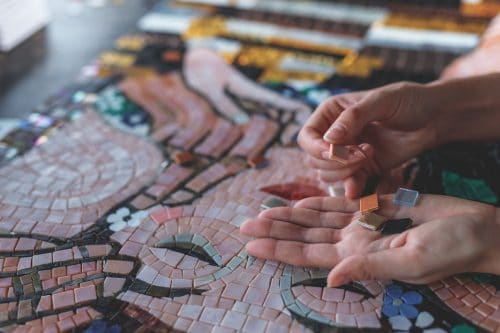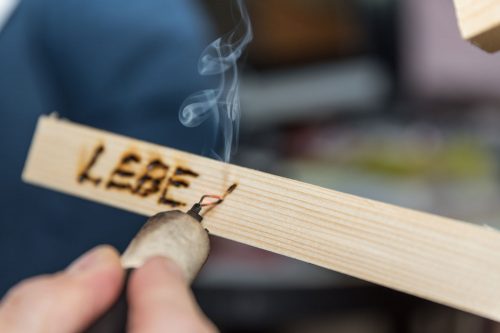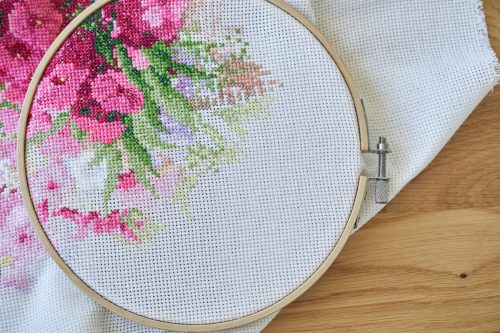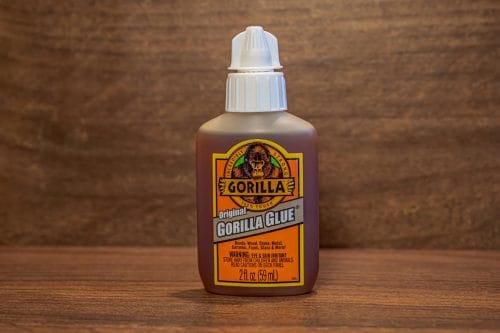Curious about how your sewing machine works? Sewing machines are something many crafty people are familiar with – but their inner workings are quite complicated. The vast majority of sewing machines sew with the lockstitch. The first lockstitch sewing machine was patented in 1846 by Elias Howe and was operated with a hand crank. You may be wondering, how does the modern bobbin thread work in a sewing machine?
The bobbin and bobbin thread are necessary components of a machine-sewn stitch. The lockstitch is a secure type of stitch that uses two threads – an upper thread and a lower thread. The upper thread feeds from a spool and is threaded through the needle. The lower thread feeds from the bobbin. The bobbin thread provides a loop for the upper thread to catch onto. Likewise, the bobbin thread loops into the upper thread, completing the stitch.
If you would like to learn more about bobbins, how they work in sewing machines, and some troubleshooting tips, we have put together some helpful information for you in this article. So please, continue reading.
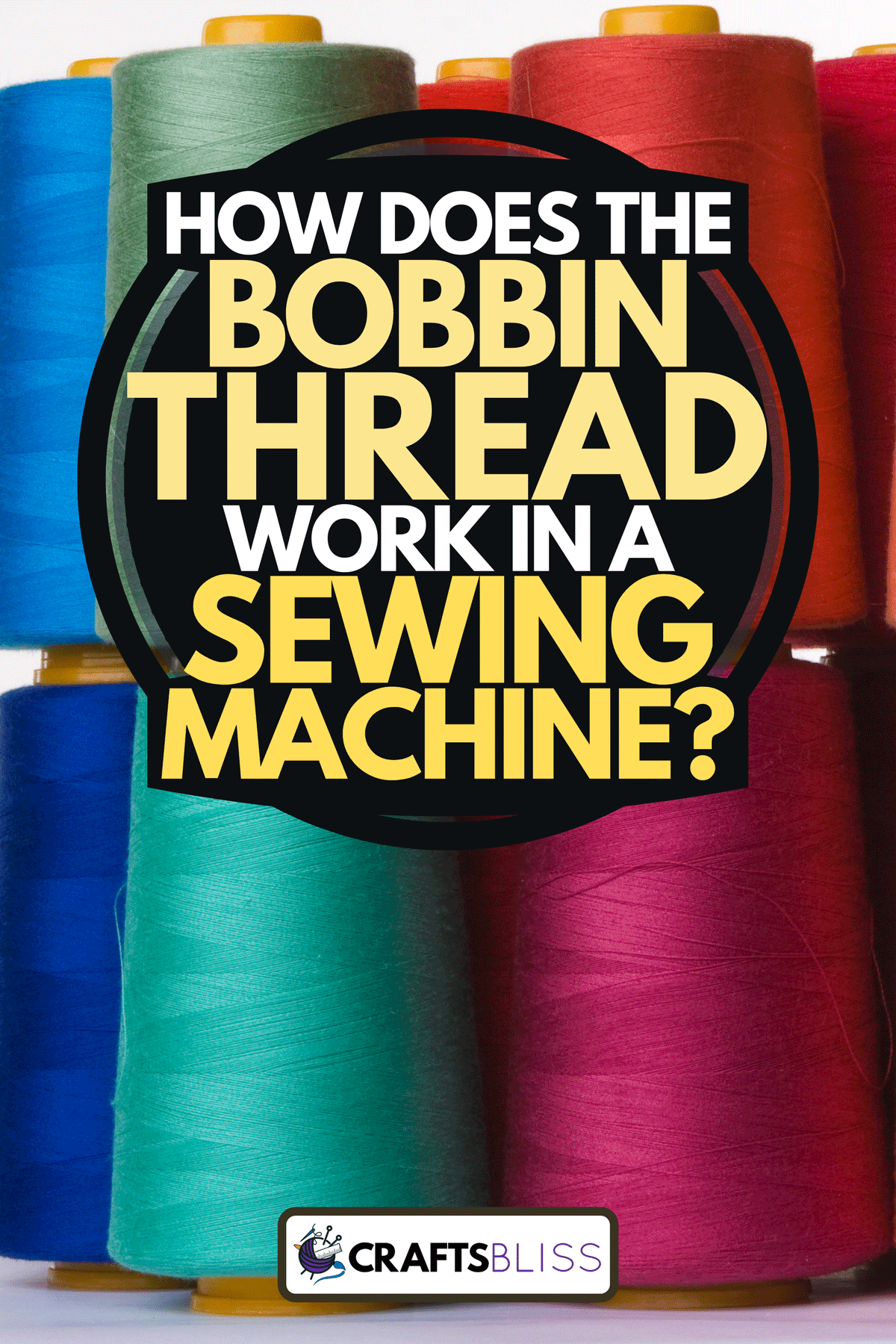
What exactly is a bobbin?
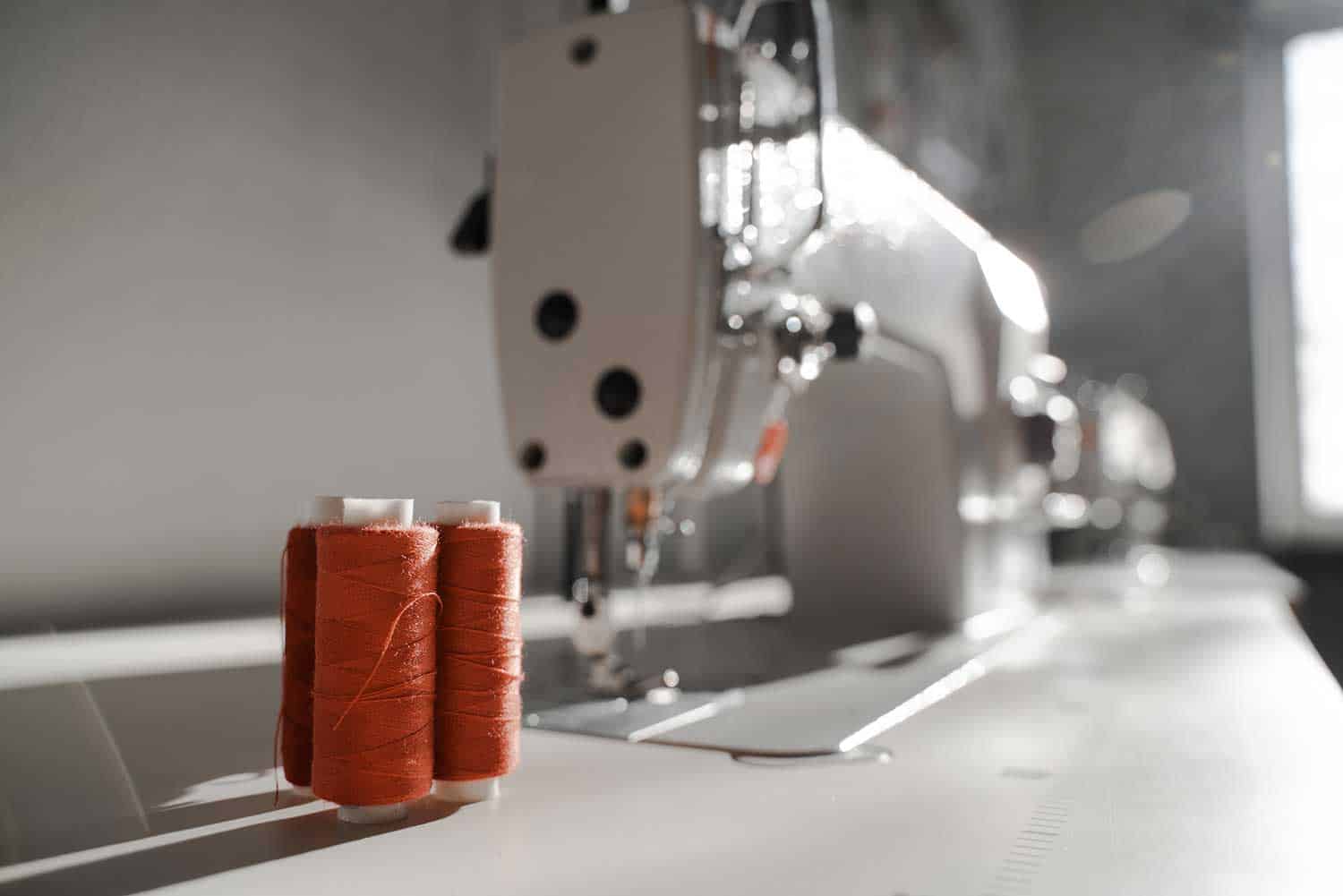
A bobbin is basically a reservoir for the lower thread on a sewing machine. The bobbin and bobbin case make up the bobbin assembly. The bobbin case will usually have a hook of some type on it. This hook works with the needle and upper thread to loop with the lower thread to create the stitch.
Bobbins come in many different sizes and are made of either metal or plastic. As explained above, the bobbin thread is needed to complete the lockstitch. It feeds the lower thread which loops into the upper thread to create the stitch. Here is a great Youtube video that explains and illustrates how machine stitching works:
What are the different bobbin sizes?
The three most common bobbin sizes are the Class 15 (A-Style), L-Style, and M-Style. Over 90% of household sewing machines will use one of these three bobbin types. Other less common bobbin sizes are the Class 15 J, Class 66, G-Style, and bobbins made for specific machine models (common with Bernina, Viking, and Juki).
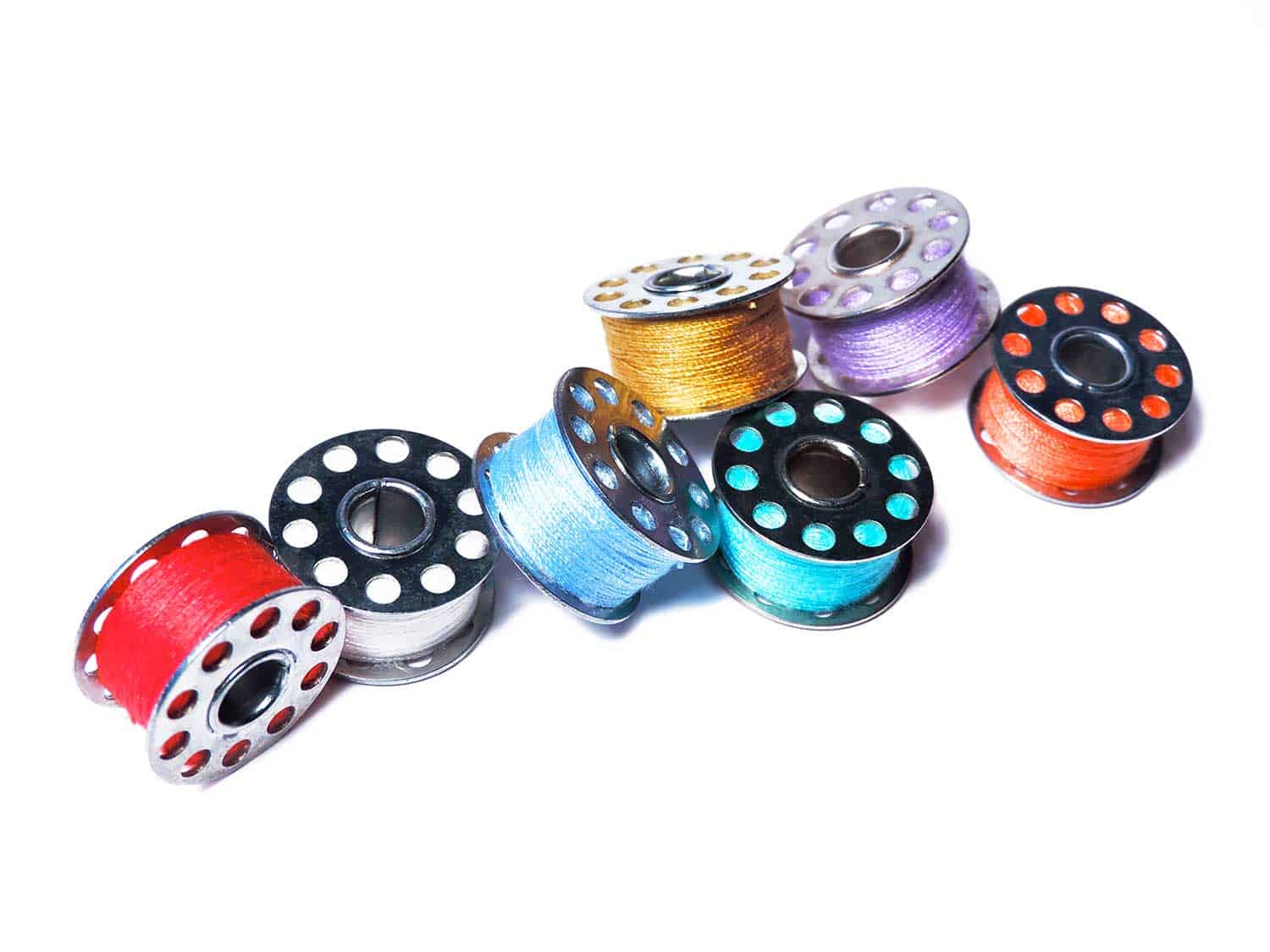
The photo above shows some very common bobbin types.
Can you use a sewing machine without a bobbin?
Unfortunately, this most likely isn’t possible. Most sewing machines require the use of a bobbin – they will not work without one. The bobbin and bobbin thread are an integral part of the lockstitch style sewing machine. There are a few sewing machines on the market that do not use a bobbin, but the stitches made by those machines are generally not as secure as the dual thread lockstitch.
If you find yourself without a bobbin, you will unfortunately not be able to use your sewing machine until you get one. Check your sewing machine manual to find the required bobbin type. You may be able to find some of the more common bobbin types in your local craft stores or you may have to order your bobbins online.
Can you use metal bobbins instead of plastic?
Generally, no – bobbins are made to fit specific sewing machines and are not interchangeable. Newer sewing machines tend to use plastic bobbins while older machines use metal, but there are exceptions to this.
Sewing machines have lots of very small moving parts that must fit together precisely, and anything that doesn’t fit will cause the machine to not work properly and may even damage the machine. Your best bet is to refer to your sewing machine’s manual to find the correct bobbin size and type.
How do you change the bobbin?
If your bobbin thread has run out or you want to use a different color, you will need to change your bobbin. Here is the general process:
- Open the bobbin case.
- Remove the bobbin and any bits of thread.
- Wind the bobbin if necessary (follow manufacturer instructions).
- Replace the bobbin into the case and route the thread correctly.
- Close the bobbin case and you are done!
Here's a helpful video in case you need a visual guide:
What is the bobbin case on a sewing machine?
The bobbin case is where the bobbin spends most of its time doing its job. It is usually located in the lower arm of the sewing machine. Some bobbin cases are top-loading while others are front-loading. For either type, the bobbin must be loaded correctly, and the thread routed a specific way in order for the machine to stitch properly.
Are bobbin cases universal?
No – bobbin cases are built to fit specific sewing machines. The shape and size of a bobbin case are engineered precisely to fit inside the sewing machine. Remember, sewing machines are built with very precise measurements and those moving parts need to fit together precisely or the machine will not work.
How to thread a bobbin?
You should always check your sewing machine manual for the exact instructions on how to thread your bobbin, but here is the general process: Filling your bobbin with thread is called “winding” the bobbin, and it will usually use the same thread that you are using to sew your project with.
Most sewing machines have a special bobbin winding post on the top, though some bobbins are filled while still inside the bobbin case. The main thread is rerouted to the bobbin to be wound, and the bobbin is set to the correct position for winding.
Press the foot pedal to start winding the bobbin and stop when the bobbin is full. Some machines will indicate when the bobbin is full. Do not overfill the bobbin as this will cause stitching errors. Another important thing to remember is to only start winding on a bobbin that is completely empty. Winding on a partially full bobbin can also cause errors when sewing.
It is very important that the bobbin is wound evenly and with the correct tension! Uneven, too tight, or too loose bobbin thread will cause all sorts of problems when you are sewing.
To achieve this, keep a medium, even, constant speed when winding the bobbin. Watch the tension of the thread while it is passing through various channels and after it’s wound. For top-wound bobbins, use your finger or a pen to guide the thread up and down so it will distribute evenly on the bobbin (some machines are better at doing this automatically).
If you find your bobbin thread is winding badly, stop and discard the wound thread. Check your sewing machine tension, check the thread route for errors, check that the bobbin is set correctly for winding, and check that your thread is in good condition.
Here is another great video that illustrates how to wind your bobbins correctly every time:
If you need to wind a lot of bobbins and don’t want to use your machine, there are bobbin winders available. These are great for preparing large projects or having kids help with sewing projects!
Click here to see this Singer bobbin winder on Amazon.
What is bobbin fill thread?
When doing machine embroidery or decorative stitching with fancy embroidery thread, you may want to use a different thread on the bobbin – this is known as bobbin fill thread. Usually this is a thin, white polyester thread made specifically for this purpose. It is available pre-wound onto bobbins or on a large spool so you can fill your own bobbins.
Bobbin fill thread is lightweight but strong and is good as a backing thread for embroidery projects. It also helps conserve your pretty, shiny embroidery thread!
Click here to see these 2 spools of white bobbin fill thread on Amazon.
How do you adjust bobbin tension?
On the outside of most bobbin cases, there is a small flathead screw that holds down a tension plate – this screw can be tightened or loosened to adjust how tightly the tension plate holds onto the thread. Adjusting your bobbin tension can be helpful if you have adjusted your upper thread tension but that still has not done the trick. As always, consult your sewing machine’s manual for the exact instructions on adjusting your bobbin tension.
Why is my bobbin “jumping?”
If your bobbin jumps or jolts around when sewing, this is an indicator that something isn’t right. The most common causes for the bobbin jumping around are:
- Incorrect bobbin installation
- Incorrect bobbin thread winding
- Damage to the bobbin or bobbin case
If you feel, hear, or see the bobbin moving around while you sew, stop sewing immediately and turn off your machine. Inspect your bobbin to see that it has been installed and wound correctly. Look for any cracks, scratches, or burrs on the bobbin and bobbin case.
If the bobbin was installed or wound incorrectly, it is a simple matter to reinstall or rewind the bobbin and try again. Likewise, if you detect damage to the bobbin, you should simply dispose of it and use a new one. However, if your bobbin case is damaged, you may need to take your machine to be serviced or have the bobbin case replaced.
In Closing
By now you have learned all about bobbins and hopefully gained a better understanding of how your sewing machine works. Next time you sew or perform maintenance on your machine, take a moment to appreciate the complexity of engineering – saving you from hours upon hours of hand sewing!
Before you go, be sure to check out these other sewing guides that may be of interest to you:
What Tension Should Your Sewing Machine Be On?
How Much Sewing Thread Do You Need For A Project? [Here’s How To Tell]



![Read more about the article Best Glue for Outdoor Mosaics [6 Types]](https://craftsbliss.com/wp-content/uploads/2020/12/CHICAG1-500x333.jpg)
